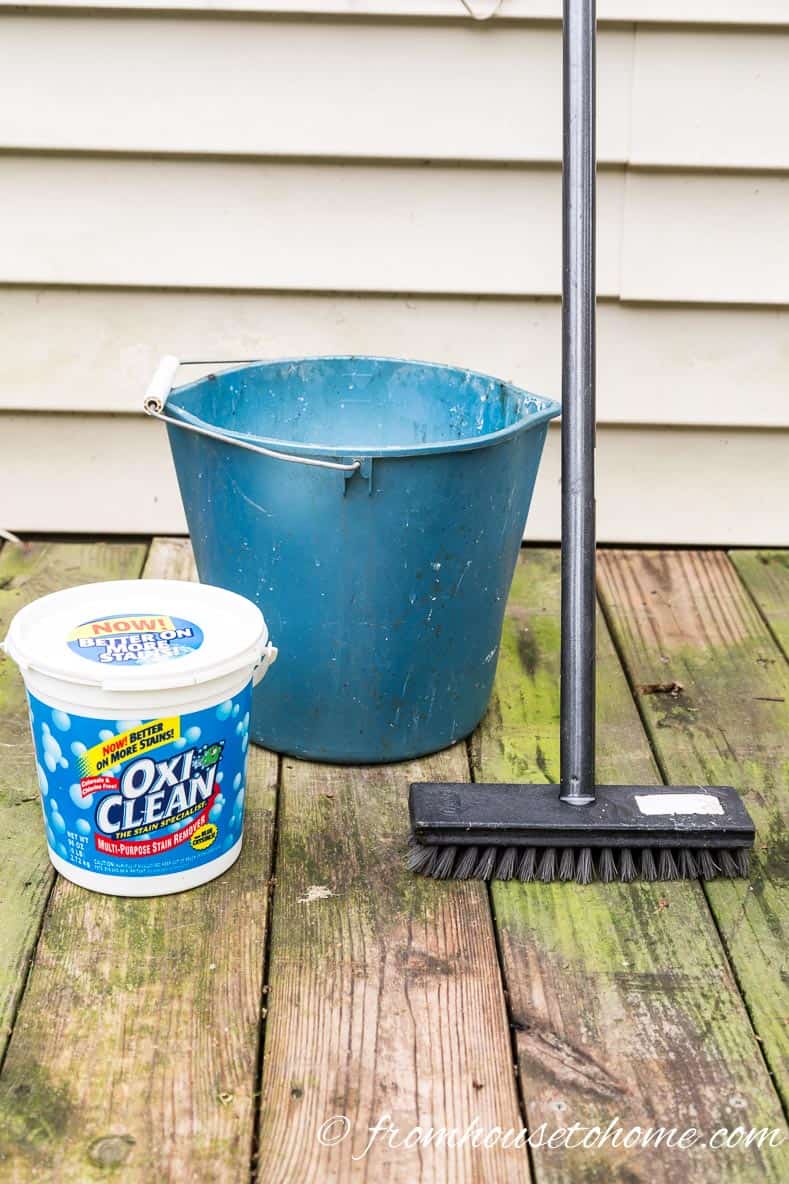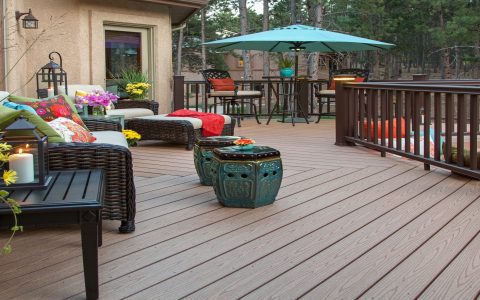Creating your own deck cleaner is a cost-effective and often eco-friendly way to maintain your outdoor space. Always test any homemade solution on an inconspicuous area of your deck first to ensure it doesn't cause discoloration or damage.
Basic All-Purpose Deck Cleaner
This solution is suitable for general cleaning and light dirt on most deck types, including composite and vinyl. For wood, use with caution and rinse thoroughly.
- Ingredients:
- 1 gallon of warm water
- 1/4 cup of mild dish soap (biodegradable preferred, avoid those with degreasers if using on sealed wood)
Instructions: Mix ingredients in a bucket. Apply with a deck brush or mop, scrub gently, and rinse thoroughly with clean water.

Oxygen Bleach Cleaner (For Mold, Mildew, and Algae)
Oxygen bleach is a good alternative to chlorine bleach as it's less harsh on wood fibers and plants. Effective for tougher stains like mold, mildew, and algae.
- Ingredients:
- 1 gallon of warm water
- 1 cup of powdered oxygen bleach (e.g., OxiClean or generic sodium percarbonate)
Instructions: Dissolve the oxygen bleach completely in warm water. Apply to the deck, let it sit for 10-15 minutes (but don't let it dry), scrub affected areas with a soft to medium bristle brush, and then rinse thoroughly with water. This is generally safe for wood and composite decks.
Vinegar Solution (For Light Mold/Mildew on Wood - Use Cautiously)
White vinegar can be effective against mold and mildew but is acidic. Use a diluted solution and test carefully, especially on softer woods or stained/sealed surfaces, as it can potentially discolor or damage the finish over time or if too concentrated.
- Ingredients:
- 1 gallon of water
- 1 cup of white vinegar
Instructions: Mix vinegar and water. Apply to the affected areas, let sit for about 15-20 minutes, scrub lightly, and rinse very thoroughly with clean water to neutralize the acid. Avoid using on composite decking unless manufacturer guidelines state it's safe.
Application and Safety Tips
- Protect Plants: Before cleaning, water nearby plants and cover them with plastic sheeting to protect them from runoff.
- Work in Sections: Clean manageable sections at a time to prevent the cleaner from drying on the surface.
- Scrubbing: Use a soft or medium bristle deck brush. Avoid wire brushes, which can damage wood and some composites. Scrub in the direction of the wood grain if applicable.
- Rinsing: Thorough rinsing is crucial to remove all cleaning residue, which can attract dirt or damage the deck if left behind. A garden hose with a good nozzle is usually sufficient. Avoid high-pressure power washing on softwoods or if unsure, as it can damage the wood surface.
- Safety Gear: Wear gloves and eye protection when mixing and applying cleaning solutions, especially those containing oxygen bleach or vinegar.
- Weather: Clean on an overcast day when the deck surface is cool to prevent the cleaner from evaporating too quickly. Avoid cleaning in direct, hot sun.
Important: Always check your deck manufacturer's guidelines for recommended cleaning agents. Some materials may have specific restrictions or recommendations.











